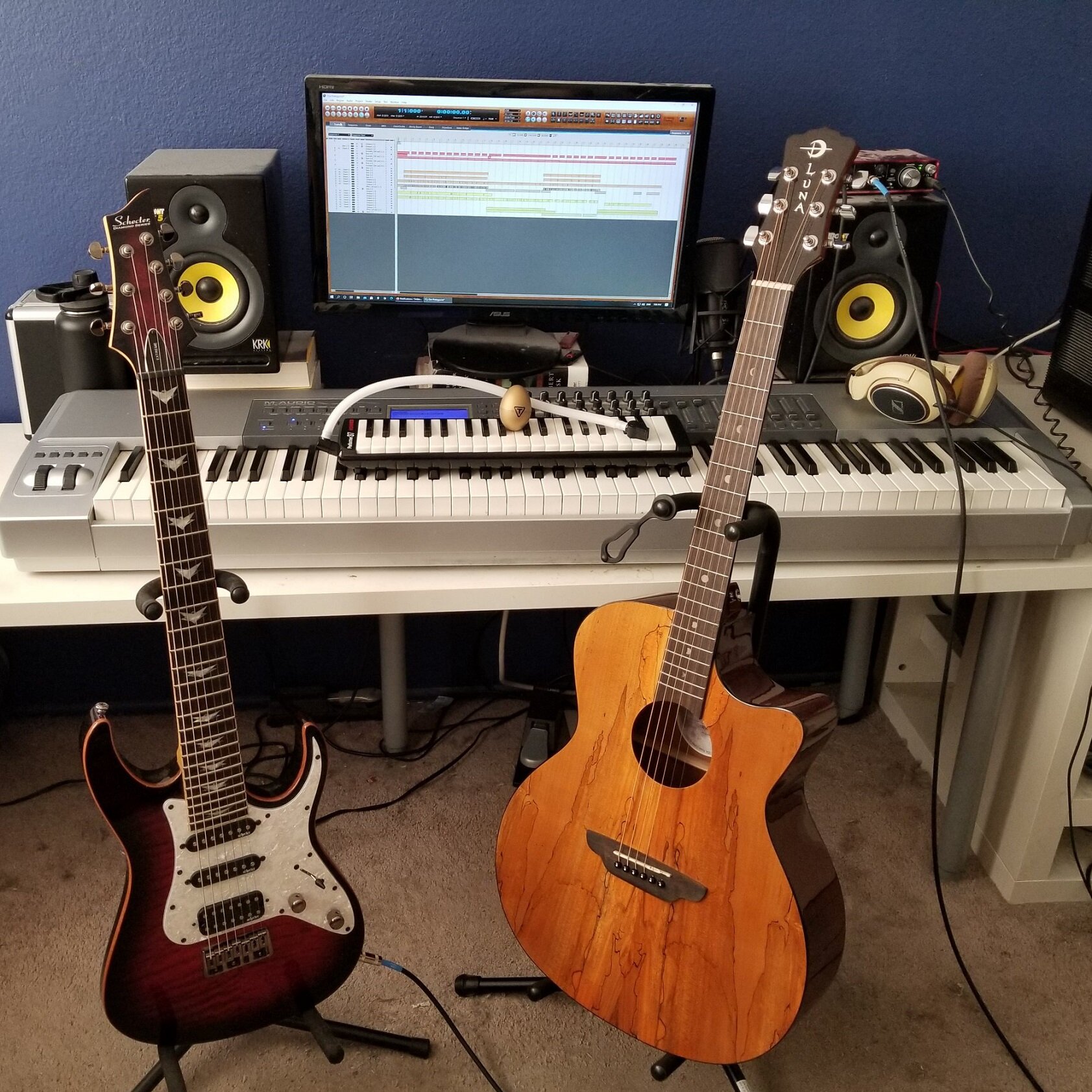TBA Visual Novel
Starting in late 2019, and through today, I’ve been contracted to compose for a currently partially under NDA visual novel production. Since then, I’ve been hard at work crafting a soundscape for the world and characters of the game, with the music now tipping towards two hours of content. You can hear material from it in the Soundcloud link above.
The team for the project has been really great. Giving me the opportunity to stretch my legs on different genres, and collaborate with some cool cats. I don’t think there’s a single track on the OST that doesn’t either have me recording something weird on it, or bringing on a session artist to add some heat.
For fun, here’s a little breakdown of the game’s most important track.
The first piece I was asked to write was a main theme that would be featured at the title screen. Knowing this would likely be what players would listen to the most, I thought long and hard about how I wanted to structure it. I knew from the beginning I wanted the music to be thematic, but I also wanted the music to be versatile, so I essentially framed the piece as a medley of different motifs and fragments of ideas that I could re-incorporate in different ways throughout the rest of the score.
The piece opens up with this melody, a kind of “call” type statement, that’s meant to be wistful and nostalgic. I recorded it on a melodica, which is an instrument which I think encapsulates that vibe pretty well.
The melodica used several times throughout the score.
The second primary motif for the game, and derived as an “answer” to the first. Here, it’s played on a the clarinet by Samuel da Silva.
Underneath the second motif is another idea. I’m a huge fan of counter-point, with placing multiple melodies atop each other. This concept works frequently on its own, but is also regularly layered into other character identities.
The fourth motif is unique, in that, while the other three represent an overall theme for the production, this is a melody used to identify the protagonist and main character. Placed under the melodica in the first melody as a counterpoint, it’s played on piano by Antônio Guerra.
Here, the theme is developed into a full, stand-alone track: performed with some folksy instrumentation.
There’s a lot of little info packed into “Hallowed Halls.” Beyond the melodies, there are other elements, like the use of a synth pad that lays under the entire track, as well as the twinkling of a mark tree’s chimes. This pad, and those twinkles are in literally every other piece of the score, as a sort of connective tissue.





